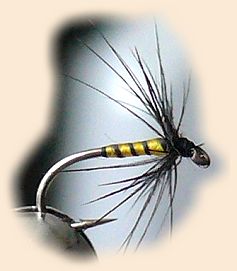|
Recently, John Scott and I have engaged in a round the
world experiment where I sent him some flies that I like
to fish and he tried them out on his rivers for cutthroat.
John has done an exceptional job, and through this
exchange we've both learned a lot. One of the patterns I
sent him was Pritt's Water Cricket. Pritt wrote his book
North Country Flies in the 1880s, listing
soft hackle fly patterns in use in the North of England. I've
had great luck with this pattern on some of the spring creeks
I fish, and the water John was showing in his reports looked
like the kind of water where I would try this. A "water cricket," or
creeper, was a local name for the nymph of a stone fly (according
to Stewart's book, The Practical Angler). It
was also a popular bait at the time (may even still be!).
Pritt suggested this pattern can be tied in yellow (as shown
here), or orange. Although he indicated the rib was optional, I
always include it and it now looks wrong without it (to me anyway).
John found that an olive version worked really well, especially
during a blue wing olive hatch. I've found the yellow one has
worked well as a general searching pattern, but I suspect which
colour works best may be stream dependent. I've tied up some
of John's olive versions an
I've tended to fish this by casting upstream and dead
drifting it along the seams. I have also fished it down
stream on occasion through the tail out of a pool, and
picked up fish on the swing. During a rise I'll cast a dry
fly hook version above the fish and drift it through that
way. John has found that stripping it through pools to
bring them in has worked really well too. Basically, it
seems that it's hard to fish this wrong, so mix it up. John
has caught rainbows, browns, and cutthroat trout, and even
a whitefish, with this fly. I've caught browns and rainbows.
I'm sure it would produce well on brookies, and panfish as
well. Quite a versatile fly this one.
Anyway, on to the fly:
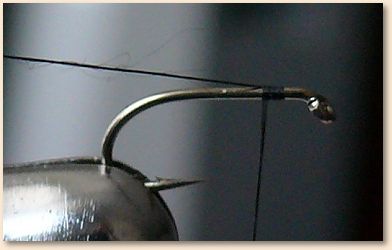
Step 1. Tie on the thread to a size 14 hook, leaving a long tag
end. This will be used as the rib, so it should extend well beyond
the bend. I've used a heavy wire wet fly hook, but it is useful to
tie soft hackles on dry fly hooks to fish them just in the surface film.
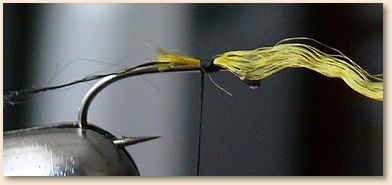
Step 2. Tie on a single strand of yellow (or orange, or olive) floss.
I use DMC embroidery floss, which breaks down into 8 strands.
Each one is very small, which is very useful for keeping the profile
slim. I tie the floss facing forward so it wraps back over the thread.
I don't lay down a thread base as again we're trying to keep the
profile slim.
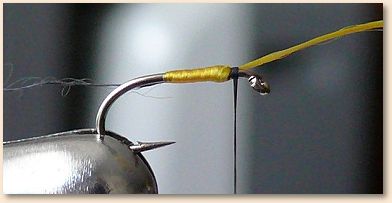
Step 3. Wrap the floss down the shank to end the
body about the point of the hook and then wrap it
back to the head. Tie off the floss with two firm wraps.
When you wrap the floss keep it good and tight and
let the floss spread out wide so it lays thin. The thread
wraps where we tied it on will help form a slight taper,
which is not necessary, but looks nice.
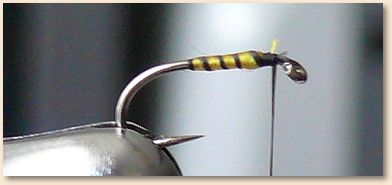
Step 4. Use the tag end of the tying thread to form a rib
and tie it in at the head. I do one full turn at the base of the
body as well.
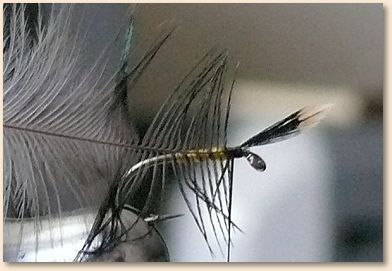
Step 5. Tie in a starling feather at the head (one or two
firm turns only). Trim the tip (which can be saved as "mock
Jungle cock.")

Step 6. Make a collar with one or two turns of the
starling feather. Tie it off and trim the feather.

Step 7. Form a small neat head, whip finish, and there
you have it, a Water Cricket. ~ Jeff Hamm, New Zealand
For more great flies, check out:
Beginning Fly Tying,
Intermediate Fly Tying and Advanced
Fly Tying.
|

